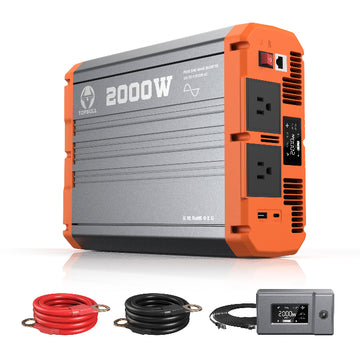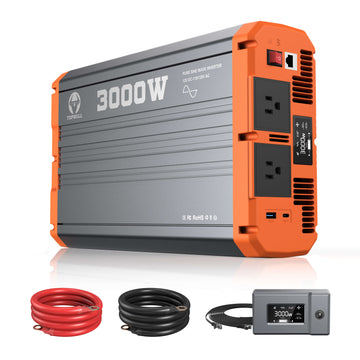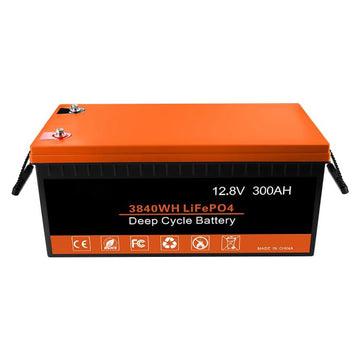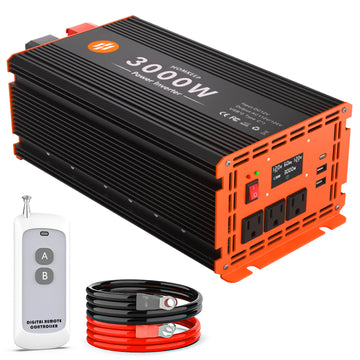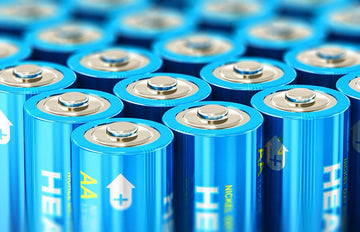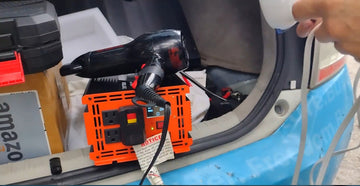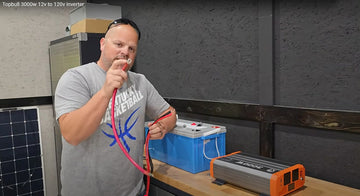As the number of devices in use today continues to grow, more and more different types of batteries have emerged to meet the needs of different devices. Li-ion and ni-mh batteries are among the most common battery types on the market, but these two battery types differ in several ways, including performance, cost, recharge cycles, and more. In this article, we'll discuss whether lithium-ion or nickel-metal hydride batteries are better for your device, as well as the differences and comparisons between li-ion and ni-mh batteries.
What does "Ni-mh" mean on a battery?

NI-mh stands for Nickel Metal Hydride and is a common rechargeable battery on the market and the most efficient of the nickel batteries. It is mainly used in small mobile devices, cameras, remote controls, power tools, and some other electronic devices.
Unlike other types of nickel batteries, Ni-mh batteries contain an internal negative electrode made of a hydrogen-absorbing alloy. The positive electrode is nickel hydroxide and the electrolyte is potassium hydroxide. Each Ni-mh battery can supply 1.2V.
What are Li-ion batteries?
Rechargeable lithium-ion batteries are currently one of the most advanced battery technologies. The positive electrode is made from lithium metal oxides such as lithium iron phosphate, the negative electrode material is typically copper foil and graphite, and the electrolyte is made from lithium salt. As lithium is the lightest metal, it has a high energy density and is lightweight. Each lithium-ion battery can deliver up to 3.6V.
Lithium-ion batteries are combined with battery management systems to form powerful battery modules, driving innovation and upgrading in various application areas such as electric vehicles, solar energy storage systems, mobile phones, telecommunications equipment, lithium RV batteries, lithium golf cart batteries, and so on.
Here are some common lithium battery specifications:
| Product Images | Specification | Prices |
 |
12V 10Ah | $51.99 |
 |
12V 100Ah | $324.99 |
 |
24V 6Ah | $55.99 |
 |
36V 100Ah | $1,039.99 |
Ni-mh and Li-ion battery costs
The most direct comparison that people look at when buying batteries is price. Let's start by analyzing the difference in cost between these two types of batteries.
Raw material cost
The main raw materials of Ni-mh batteries include nickel, cobalt, manganese, nickel metal hydride alloy, etc. These raw materials are relatively cheap, so the price of Ni-mh batteries is slightly lower than that of Li-ion batteries.
Lithium-ion batteries, on the other hand, rely on lithium and cobalt. Lithium and cobalt are both rare elements, and lithium is one of the most expensive raw materials, and the cost of mining it drives up the price of Li-ion batteries.
Manufacturing costs
Ni-mh batteries are manufactured in four steps: preparing the electrodes, assembling the cell, filling the cell with electrolytes, and sealing the cell. Manufacturing Ni-mh batteries typically requires less technology and equipment.
The production of lithium-ion batteries requires more complex processes and equipment and higher quality control. This means that the cost of manufacturing Li-ion batteries is usually higher.
Assembly costs
Assembly costs tend to vary depending on the type of NiMH battery. However, assembly costs are generally standard.
Due to the safety risks associated with lithium, Li-ion batteries require additional precision operations and safety measures during assembly. These additional safety measures increase the price of Li-ion batteries.
Economies of scale
Lithium-ion batteries are used on a much larger scale than NiMH batteries in a wide range of applications. As companies begin to improve their manufacturing processes (e.g. additive manufacturing or 3D printing of Li-ion batteries), this may ultimately reduce the price of Li-ion batteries.
Pros and cons of Li-ion and Ni-mh batteries

Some of the key characteristics of Ni-mh and Li-Ion batteries are compared below:
| Factors | Ni-mh | Li-ion |
| Specific Energy | 55-110 Wh/kg | 100-300 Wh/kg |
| Power Density | 100 - 500 W/kg | 500 - 5000 W/kg |
| Charge/Discharge Rates | Moderate. May degrade at higher rates | Higher charge/discharge rates |
| Temperature Performance | Narrow operating range:0°C to 45°C (32°F to 113°F) | Wide operating range:-20°C to 60°C (-4°F to 140°F) |
| Self-Discharge Rate | Retains 50-80% after a year | Retains 90% after 15 years |
| Low Temperature | 0°C (32°F) | -20°C (-4°F) |
| Self-Discharge Rates (per month) | 15-30% | 2-3% |
| Cycle Life | 500 - 1000 | > 2000 |
| Battery Weight | Heavier | Lighter |
| Memory Effect | Yes | No |
| Environmental Issues | Recyclable | Recyclable & limited |
✔️Pros of li-ion batteries
- High energy density: Li-ion batteries can store more energy for the same weight. This is particularly important for lightweight mobile devices.
- High average nominal voltage (not less than 3.2V): Some applications and devices require higher voltage.
- Lightweight and relatively safe: Li-ion batteries are lighter and easier to carry and use. They are also generally safe under normal conditions of use.
- Fast charging speeds: Li-ion batteries have extremely fast charging speeds, allowing users to recharge quickly when needed.
- Low self-discharge rate (approximately 3% per month): Li-ion batteries can be stored or left idle for long periods without losing much of their initial charge. This is ideal for backup power or infrequently used equipment, ensuring the device is ready when you need it.
- Long life (up to 15 years): Li-ion batteries have a long lifespan under normal usage conditions. With more than two thousand cycles, lithium-ion batteries can provide power for up to 15 years. They do not need to be replaced frequently, saving on maintenance and running costs.
❌Cons of li-ion batteries
Although Li-ion batteries have many advantages, they also have some limitations:
- Safety: Thermal runaway is one of the main safety concerns with lithium-ion batteries. Thermal runaway occurs when a battery overheats due to overcharging or exposure to external heat. This overheating can lead to fires and even explosions.
- Expensive: Another obstacle Li-ion batteries face is the limited supply of raw materials. Li-ion batteries are based on lithium, nickel, and cobalt. However, cobalt is expensive, making Li-ion batteries more expensive.
✔️Pros of Ni-mh batteries
- Relatively Safe: Fewer active substances are used in the manufacturing process, which makes these common batteries relatively safe. They are generally more stable under normal conditions of use than some other types of batteries, reducing the risk of safety issues such as short-circuiting and overheating.
- Fully discharged to 0%: These types of batteries (such as alkaline batteries) can be fully discharged to 0% without causing too much of a problem for the battery itself. This means that users can use the battery until it is completely drained without worrying about damage to the battery life. This is especially important for applications where battery life is critical.
- Relatively low cost: These common batteries are often cheaper than advanced technologies such as lithium-ion batteries. This makes them the preferred choice for many users, especially for application scenarios that require a lot of battery use, such as remote controls, clocks, toys, etc. Choosing these batteries can reduce the cost of use to a certain extent.
❌Cons of Ni-mh batteries
Like Li-ion batteries, Ni-MH batteries face several challenges. Here are some of the hurdles these batteries have to overcome.
- Self-discharge: When comparing Li-Ion and NiMH batteries, NiMH batteries have a much higher self-discharge rate, and some NiMH batteries can lose up to 50% of their initial charge within a month. When the battery is not in use, it will slowly lose power. It should be noted that self-discharge occurs more quickly at higher temperatures. Storing NiMH batteries at lower temperatures will slow down the self-discharge process.
- Lower voltage: They also have a relatively low average voltage of 1.2V, much lower than the average voltage of Li-Ion batteries. This means that for the same voltage requirement, NiMH batteries require more cells to provide the required voltage output, increasing size and weight.
- Longer charging times: When comparing Li-Ion and NiMH batteries, NiMH batteries take much longer to recharge, around 8 to 12 hours, because rapid recharging can damage the battery. In contrast, Lithium-ion batteries take about 3 to 5 hours to recharge quickly, depending on the capacity of the high-temperature high-temperature environments, resulting in a lower output voltage from the battery, which may affect the normal operation of the equipment.
FAQ
Q: What are the main performance differences between Ni-mh and Li-Ion batteries?
A: Compared to Li-ion batteries, Ni-mh batteries have lower energy density and power density. In addition, Li-ion batteries have a higher voltage, a slower self-discharge rate, and a longer cycle life.
Q: Can I use a Li-Ion charger to charge NiMH batteries?
A: It is not recommended to use a Li-Ion charger to charge NiMH batteries as the two batteries are chemically different. Using the same charger may damage the battery.
Q: Which is better for energy storage, Li-Ion or NiMH batteries?
A: When comparing Li-Ion and NiMH batteries, Li-Ion batteries are much better at storing energy because NiMH batteries lose most of their stored energy due to their high self-discharge rate, which does not happen with Li-Ion batteries because they hold their charge for a much longer period of time.

